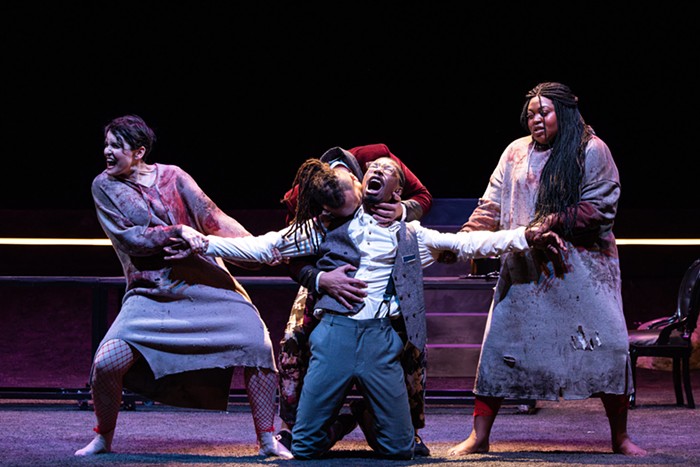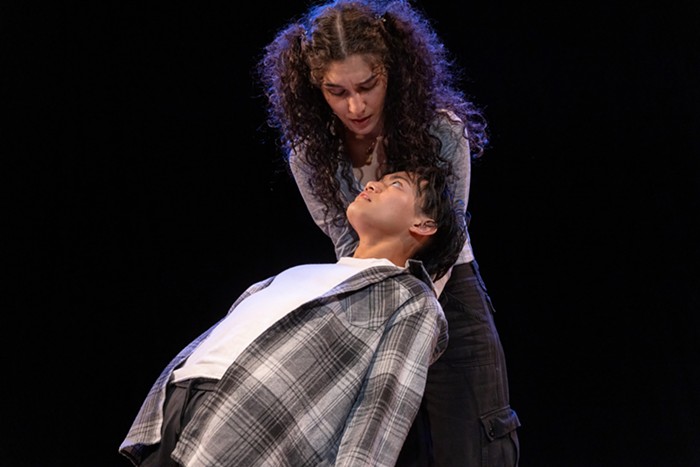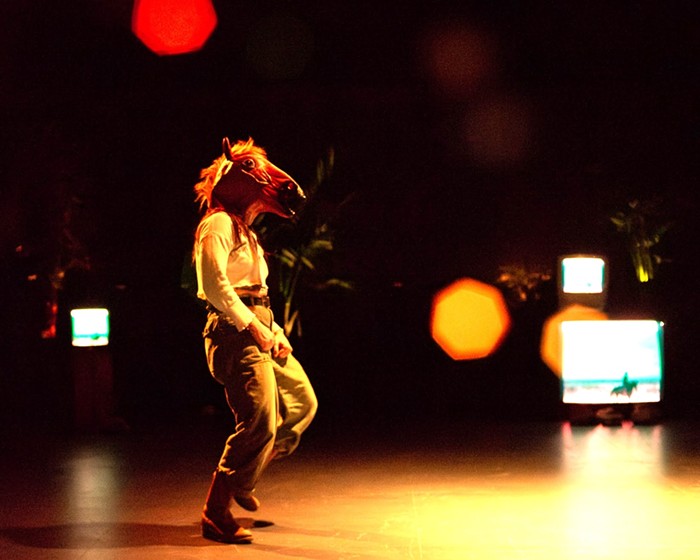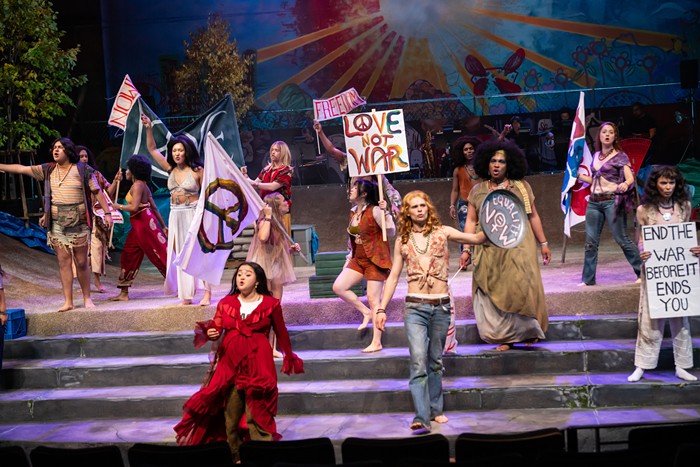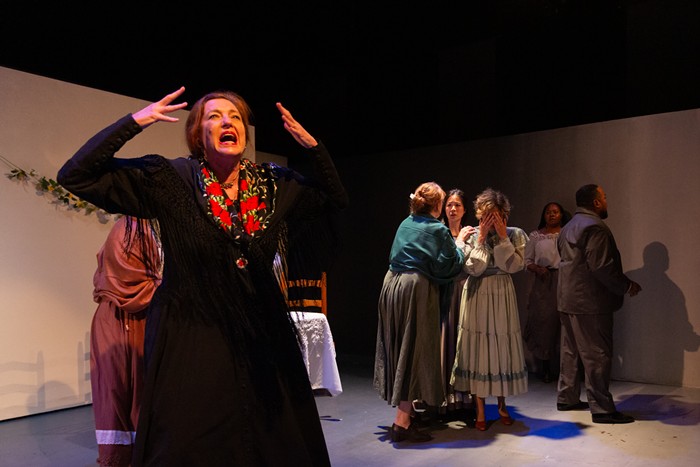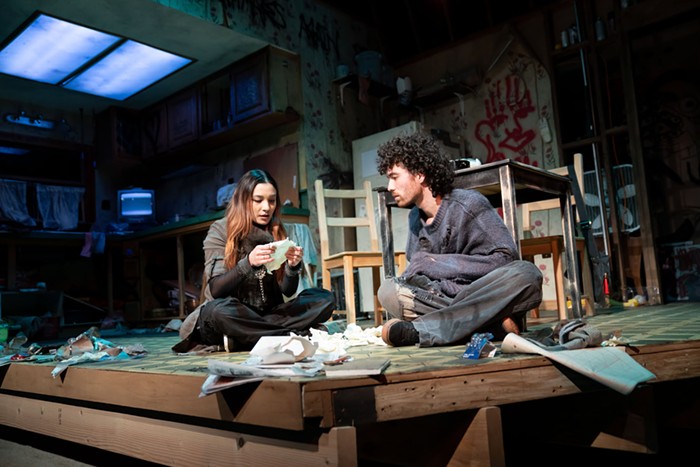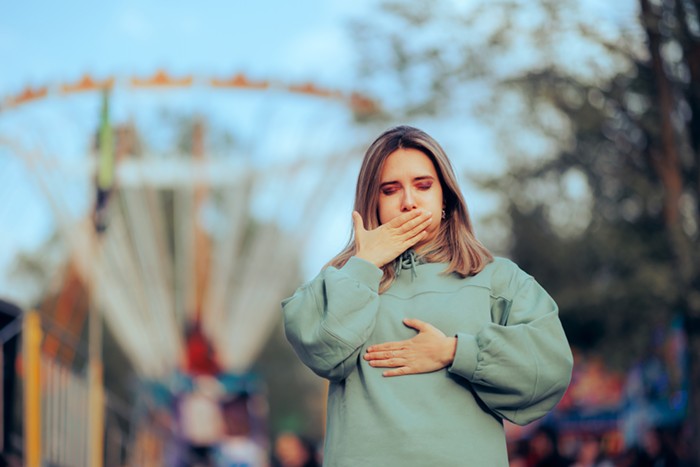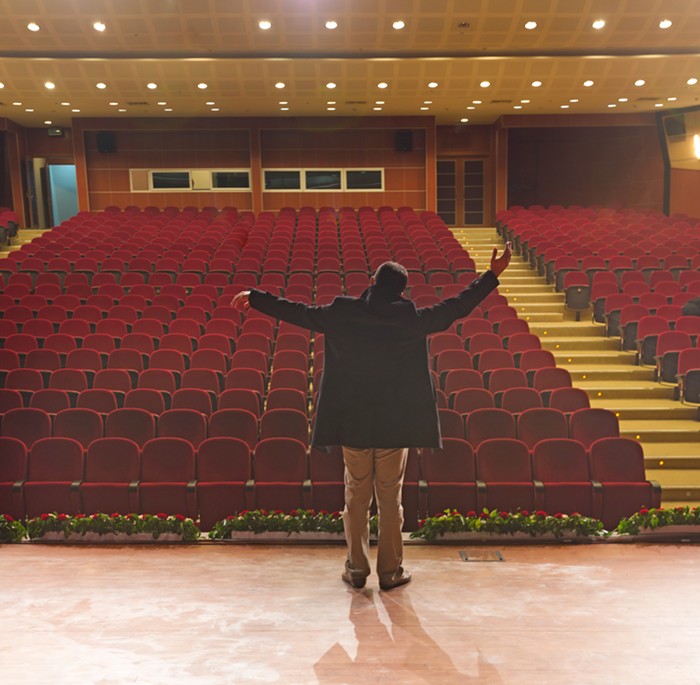Marooned In Innocence Keith V. Goodman and Dance Gatherer (Conduit Studio) through July 21 The dancers in the group Dance Gatherer are some of the most graceful and athletic that Portland has to offer. Their seemingly endless energy and charisma keeps the viewer riveted, with choreography by Keith Goodman that is provocative at best, and inconsistent at worst. The show's first piece, "Three Fathers," quickly establishes the group's technical prowess, though it may be too technical. A forming of the group into three sub-groups feels like an excuse to show the dancers standing on their heads in different ways, instead of an inspired bit of choreography. It is a thrill to see dancers like Jesse Berdine and Jen Hong perform such feats, and the piece does get more interesting when the groups break up so that individuals can careen haphazardly around the space. But this conceptual grounding is still pretty weak, especially when compared to the piece that follows: Impermanence. Impermanence is an explosion. Sultry and spiritual, it features an epic battle between good and evil set to the driving beat of an all-boy percussion band. Why Goodman chose to make the band all boys (the oldest is probably 13; the youngest, perhaps 7) is a mystery. Maybe it's just because they are good at what they do; their drumming provides a stellar soundtrack to the conflict that unfolds between Goodman's unassuming everyman character and Berdine's dark villain. Berdine's presence in all the pieces is large, but here he is especially memorable. He stalks Goodman about the space, his face never changing, his body fluid and powerful. Only with the help of the other dancers does Goodman finally ward of his advances, and even then the future seems treacherous. The final image, with Berdine glowering in a fading light on one side of the space, and Goodman and co. standing on the other side, cautiously defiant, is both frightening and gorgeous. The second half of the show never quite lives up to that moment, though it is still impressive in its own right. The title piece, Marooned In Innocence, is a much lighter affair, with dancers flitting about like birds in an arboretum. Goodman again plays a Christ-like character, leading the group into the utopic space, then, interestingly, leaving them for nearly 20 minutes so they can dance on their own. The piece is way too long, but the skill of the company keeps it compelling. They are always moving, throwing themselves through all kinds of difficult moves and positions without ever tiring. Their energy extends all the way through the final dance, Tempo, which is really nothing more than a series of ideas that Goodman couldn't work into Innocence. The piece is neat because the dancers get to show off what is unique about their own style, by taking turns slamming out beats by stomping, clapping, and snapping. Tempo is louder, faster, and easier than the preceding acts--it's kind of like if Brittany Spears came out to conclude a Phillip Glass concert. It doesn't really fit, but then it's hard to tell if anything really fits into Goodman's colorful parade, where thematic continuity has been drowned in a flood of mesmerizing exuberance. JUSTIN SANDERS
